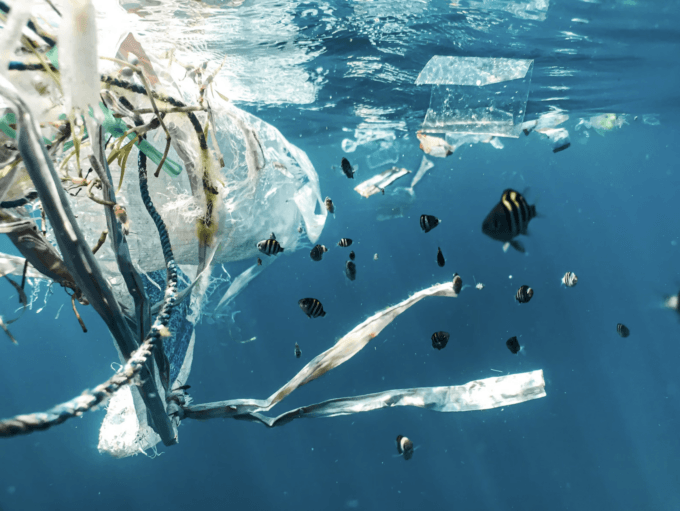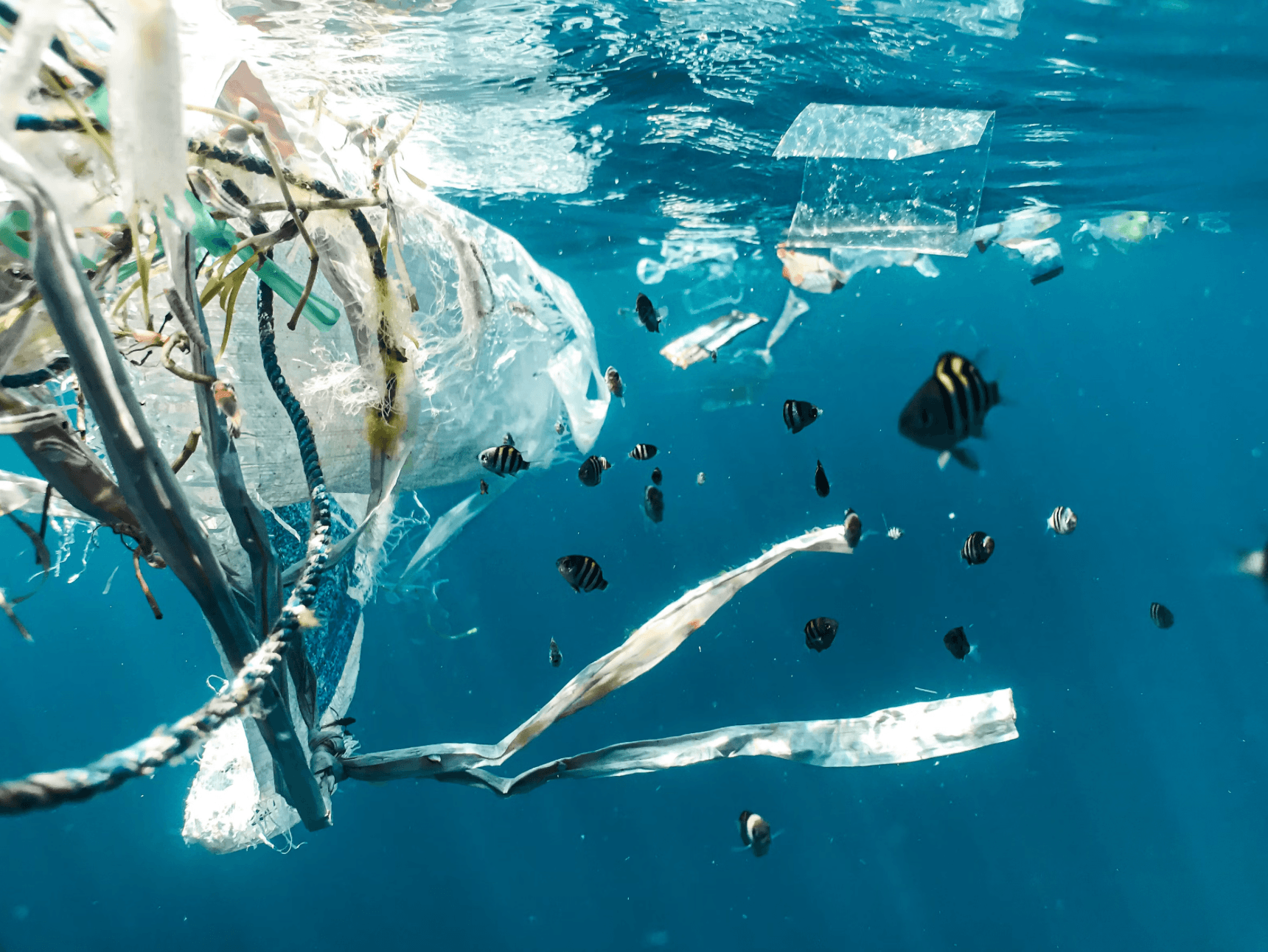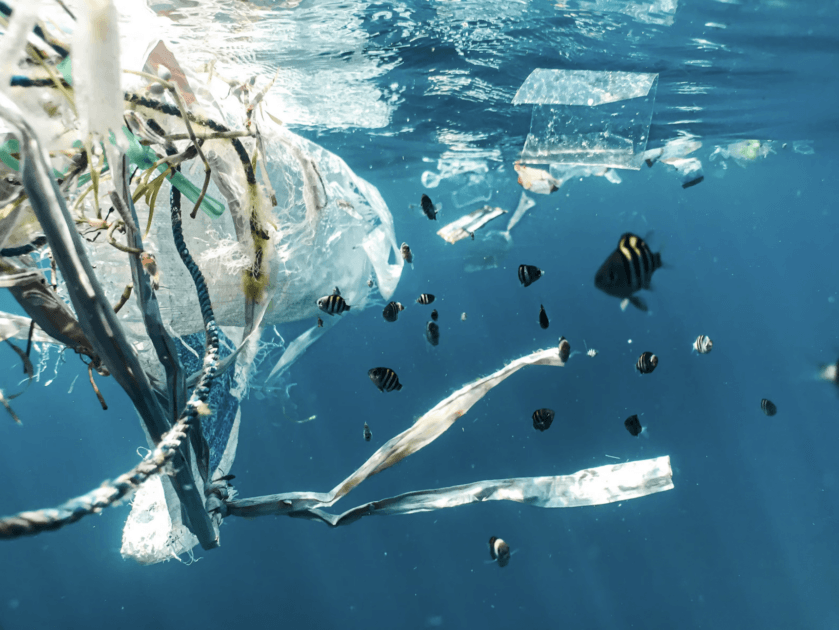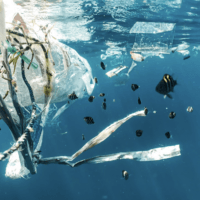






























































Photo by Naja Bertolt Jensen
In recent years, heart-rending images of dead or dying sea mammals and fish, their stomachs stuffed with plastic, have shocked citizens around the globe. Reports indicate that the amount of plastic dumped into the world’s oceans has tripled over the past decade alone. And unlike oil spills, which can be remedied with extensive and costly clean-up efforts, there is no obvious solution to plastic “spills.”
Typically, the plastic is discarded on shore and then slowly makes its way into rivers and streams that feed the world’s largest bodies of water. Plastic is not biodegradable and because so much of it is translucent, it’s not easy to detect. Even sea creatures often cannot distinguish plastic from their favorite prey. In the end, tens of thousands of aquatic creatures – maybe more — die every year from consuming plastics of various kinds.
It’s not hard to figure out why plastics have come to pose such a threat. First, modern industry isrelying increasingly on plastics in consumer products like liquid containers, dishes, cups, straws and utensils. Other products formerly made of wood, glass or metal are being substituted with plastic. Plastic bags and plastic packaging are ubiquitous. Even many construction and other heavy-duty products – including piping, roofing, insulation and basic building blocks – have increasingly shifted to plastic.
Ironically, some of this transition stems from a desire to reduce reliance on paper products and to preserve trees. Moreover, plastic packaging prevents food contamination and can improve food safety. However, by switching to plastic, a new and dangerous environmental threat has emerged.
A look at the numbers is frightening. Roughly half of all plastics production – half! – has occurred since the new millennium. Moreover, during the past ten years about 60 percent of all the plastics produced either went to landfill or have been dumped in the natural environment. One source notes: “At current rates there will be more plastic than fish in the ocean by 2050 by weight, much of it in the form of small particles, ingestible by wildlife and very difficult to remove.”
The rapidly rising volume of plastics might not be such a huge problem if there were effective waste management. The average person in the US and Western Europe consumes five times the amount of plastic as the average person in Asia However, waste management systems in Asia are practically non-existent. The biggest culprit is China, followed by Indonesia, Vietnam, Philippines, and Sri Lanka. In fact, China, at 1.3-3.5 million metric tons, dwarfs the next five countries combined.
How pervasive is the plastics threat? An estimated 60% of all sea birds and 100% of all sea turtles have ingested plastic. While some fish species are more affected than others, a 2021 study found that 386 of the 555 species studied – about two-thirds – had ingested plastic. Plastic disrupts sea animal digestive systems and high levels of consumption can cause choking, suffocation and death. Fish can also lose mobility and begin to starve, thinking they have consumed food sources that are actually plastic. Predators that consume those fish also become contaminated; over time, the entire ocean food chain is affected.
Chemicals from plastic can also degrade the quality of coral reefs where 25% of aquatic species live, and which help sustain the delicate balance of the seas. The presence of plastic increases the likelihood of coral disease from a low of 4% to a whopping 89%, according to one recent study.
It is not just the quality of sea life that is affected. Recent research indicates that human consumers that buy and eat fish are also likely contaminated by smaller plastic microbes that are toxic. For example, one study estimates that 25% of the fish sold in markets in California contain microplastics. In an article published in Scientific Reports, the scholars concluded “The widespread distribution of micro-plastics in aquatic bodies has subsequently contaminated a diverse range of aquatic biota, including those sold for human consumption such as shellfish and mussels. Therefore, seafood products could be a major route of human exposure to microplastics.”
The Environmental Protection Agency periodically releases advisories to warn consumers when fish get contaminated with chemicals in local U.S. waters. However, a growing share of US seafood – as much as 85%, depending on the region – now comes from foreign waters, which the EPA does not monitor. In fact, only a small fraction of imported fish is tested for contaminants.
And fish may not be the only source of human contamination. The most recent studies have found microplastics and nanoplastics, which are even smaller, in fruits and vegetables, water bottles, cosmetics and household dust. As a result, American consumers may be far more vulnerable to plastic contamination – and a wide range of plastic-related health risks, including cardiovascular disease – than they realize.
To be sure, the current science on human exposure to toxins in consumed microplastics is still in its infancy. To date, most of the concern about consumed seafood has focused on toxic chemicals like mercury, where the risk is unusually high for specific fish species (and pregnant women and children). However, an estimated 210 of the 383 fish species that are known to ingest plastic – about 55% – are consumed commercially, which means the microplastic health risk exposure to humans could be far more widespread. While alarmism based on the current evidence is unwarranted, the need for more advanced research on plastic chemical contamination of humans from fish and other foods is indeed urgent.
Finally, it’s worth mentioning the visual blight caused by plastic waste, especially on some of the world’s most premier beach locations. One of the most notorious waste-scarred areas is Kamilo Point off the Big Island of Hawaii. The North coast of Oahu is another badly blighted area. Because these areas are highly concentrated, the negative visual impact is augmented, but also localized. Within Hawaii, these plastic waste beach dumps are hard to ignore and are beginning to affect tourism.
A study by the National Oceanic and Atmospheric Administration found that doubling the amount of marine debris on beaches in tourism-dependent communities in Orange County, California had resulted in a loss of $414 million tourism dollars spent, and a decrease of nearly 4,300 jobs.
What can be done? Experts have outlined four areas of potential intervention – some at the source, in production, others, in plastic waste management, which may be more feasible politically, though less effective. They include:
Switch from plastics to bioplastics. Only 4% of plastic is made from corn and other vegetables that are biodegradable. In theory, this percentage should be much higher. However, bioplastics have been shown to release a high level of methane, a greenhouse gas 23 times more powerful than carbon dioxide — which means increased reliance on bioplastics may worsen the climate change problem. In addition, the land required to grow bioplastics cuts into food production, and could contribute to the global food crisis. Despite these real and potential risks, sustainable bioplastics alternatives do exist – the automotive industry is already applying them to upholstery, carpeting, vehicle hoods and other exterior components, for example – and they should be pursued further.
Reduce the manufacture and use of some kinds of plastic. Above all, “single-use” plastic – plastic that cannot be recycled and typically ends up in landfill and the oceans – should be eliminated. Some 60 countries have introduced bans or imposed fees on single-use production. In the US, there are piecemeal bans by states and cities on plastic bags and drinking straws. Ideally, all states – and the nation as a whole – would impose an outright ban on single-use plastic. A more comprehensive ban on plastic may not be feasible for a host of reasons. However, environmental groups like Greenpeace, are calling for a strong treaty that will cut plastic production by at least 75% by 2040.
Expand ocean clean-ups. Most of the plastic that makes its way to the ocean tends to remain in close proximity to the shore. One study found that, for the first five years after entering the ocean from land, 77 percent of plastic remained on beaches or floated in coastal waters. That means organized beach cleanups may be one of the most effective ways of dealing with ocean plastics and microplastics. They also help publicize the issue and increase pressure on legislators and producers to take stronger action.
Groups like the Ocean Conservancy bring together more than 10 million volunteers from 150 countries to conduct an annual International Coastal Cleanup. Over three decades the group’s volunteers have removed an estimated 220 million pounds of trash from the world’s beaches. That amount sounds impressive, but is relatively small compared to the problem.
Increase plastics recycling. The EPA has begun providing grants to plastics companies to recycle their plastic and many are eagerly joining the effort because it has proven profitable and allows them to hire more workers. In early 2018, the Association of Plastic Recyclers launched a nationwide campaign to increase market demand for recycled resins. But recycling plastic is expensive and the recycled plastic is often of poor quality and not easily used for new products. Only 10% of the plastic currently in use has been recycled once; just 1%, twice. To be cost-effective, recycling needs to be scaled up dramatically and greater sorting of the plastic conducted.
A related solution is to use incineration technologies to convert plastic waste to oil, gas and power. Here again, some potential environmental drawbacks need to be addressed, however. Controlled incineration of some plastics coupled with the use of emissions capture technologies at dedicated installations could help.
The ocean plastics problem – especially the threat from microplastics – has not received the same attention as many other environmental challenges. Because so much of the source of the problem is concentrated in Southeast Asia, Western nations have tended to focus more attention elsewhere. That’s also proven to be a convenient dodge, since Western nations are in a position to effect meaningful change. Today, the issue has reached a level of visibility and risk to public health that an “out of sight, out of mind” approach can no longer be sustained.
In theory, the Biden White House was committed to taking strong action on the plastics front. The administration did commit to a 10-year bioplastics initiative in March 2023. But Biden’s overall national strategy initiative didn’t emerge until last November, and seemed little more than a last-ditch re-election maneuver designed to shore up his sagging popularity, especially among youth.
Predictably, the incoming Trump administration is now reversing course, rejecting Biden’s proposed ban on single-use plastic straws, for example. In the absence of fresh grassroots advocacy and legislative lobbying, serious action by the administration or Congress on plastics could be derailed indefinitely.
Still, there are ways to move forward. At least five pieces of bipartisan legislation are already circulating in Congress to address the problem – wisely focusing more on recycling and waste management, perhaps, than on plastic production. The Senate has already passed a number of bills co-sponsored by outgoing Senate Environment and Public Works Committee Chairman Tom Carper, a centrist Democrat, with support from GOP Senators Shelley Moore Capito (R-WV) and John Boozman (R-AR) that aim to reduce plastic pollution by investing in recycling and composting systems. Counterpart House bills, introduced last year by Representatives Don Davis (D-NC) and Larry Bucshon (R-IN), also aim to modernize recycling infrastructure, increase recycling rates, and promote the use of recycled materials in new products. By focusing on fresh business opportunities to profit from plastics control, as well as new fiscal revenues to be gained from licensing and taxation, the more likely conservatives are to support these initiatives, even with a GOP dominated Congress.
The manufacture of plastics is escalating rapidly. The next two to three decades will likely be critical for determining whether the problem is contained and reduced to manageable proportions – or continues to escalate out of control. Surveys indicate that well over three-quarters of Americanssupport plastics control policies, including pressure on manufacturers – combined with incentives – to shift to more sustainable packaging, and in some cases, to ban plastics production outright. With the threat so high – not just to wildlife but also to human life – it’s critical to bring plastics control to the forefront of the nation’s environmental agenda.
The post Plastics in the World’s Oceans and Food: No Longer an Invisible Killer appeared first on CounterPunch.org.
This content originally appeared on CounterPunch.org and was authored by Stewart Lawrence.